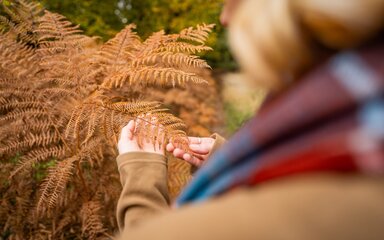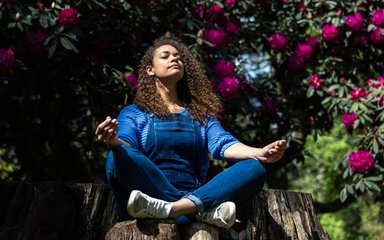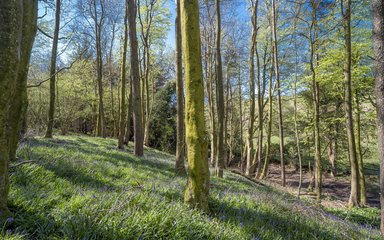
This is a guest post written by Ellen Devine, Wellbeing Projects Manager at Forestry England.
Spending time in forests is good for our mental, physical and social wellbeing. So how do we continue to experience the wellbeing benefits of trees and forests whilst following the important Government advice to stay safe and stay home?
Well, the good news is that recent research suggests that connection with nature is more important for mental wellbeing than simple exposure to nature. Nature connectedness describes our emotional relationship with nature.
Research shows that people who are connected to nature, rather than simply exposed to nature, have better wellbeing and are more likely to do things that benefit nature.
Now is the perfect time to focus on how we can best connect with the natural world and in doing so reap the benefits for ourselves and the planet.
We’ve found three effective ways for you to connect with nature without leaving your home. From forest bathing, creative storytelling, and switching off.

Our brains find it hard to distinguish between something that we’re visualising, picturing in our minds, and something that is actually happening.
That’s why successful athletes often talk about visualising themselves winning a race – just picturing their success has been proven to improve their performance.
The same trick can be used to reduce anxiety and stress. The Japanese practice of forest bathing, or shinrin yoku, is the simple method of being calm and quiet amongst the trees and has been proven to help both adults and children de-stress. We may not be able to get to a forest at the moment, but we can bring the forest to us. Here’s how:
- First turn off your devices to give yourself the best chance of relaxing, being mindful and visualising your sensory forest experience
- Find a comfortable place to stand or sit – perhaps by an open window or in your garden
- Slowly close your eyes
- Imagine yourself standing amongst trees – this could be in your favourite forest or you could create yourself an imaginary forest
- Breathe deeply and imagine feeling the warmth of the sun on your face
- A breeze rustles the leaves and you hear bird song close by
- Take long deep breathes into the abdomen, extending the exhalation of air to twice the length of the inhalation – this sends a message to the body that it can relax
- As you picture yourself standing amongst the trees, what do you see around you?
- What can you smell?
- What can you hear?
- Take in your forest surroundings using all of your senses. How does it feel?
- Remember, you can stay here as long as you like and return whenever you wish. This is your forest, your safe, calm, peaceful place
- When you’re ready to move on, take a deep breath and slowly open your eyes.

Forestry England is the nation’s largest land manager. We look after more land and trees than any other organisation in the country. Forests are vital for the future of our planet. They improve the health and wellbeing of everyone, provide homes for wildlife and help combat climate change.
Considering the important role they play, wouldn’t it be amazing if trees could talk and tell us what they’re thinking?
Try this
- Try writing a poem or story from the perspective of a tree – what has the tree seen in its lifetime; what are its hopes for the future; what would it say to humans?
- Illustrate your story – take inspiration from any trees you can see from your window, or use photos from a day out in the forest
- If you’re confident sharing your art, share your creations with us on Instagram, Twitter or Facebook.
If you’re looking for some inspiration, check out these wonderful Tributes to Trees written by the public and famous poet Carol Anne Duffy. Or if you've got time for a longer read, make yourself a cup of tea, get comfy and immerse yourself in the magical forests of Zakiya Mckenzie's 'Forest Collection' and Tiffancy Francis-Baker's 'The Tangled Web'.

We know that forests are a haven to escape and a place where we go to regain balance and escape from the pressures of everyday life. Finding ways to recreate this escape whilst staying at home is essential for maintaining positive mental wellbeing.
It can be tempting to turn to technology to keep us entertained whilst self-isolating, but surrounding ourselves with indoor technology and devices all day scatters our focus and attention and can increase stress.
These simple tips will help you switch off and unwind:
- Try going for your daily walk/ exercise without putting on your headphones. What sounds can you hear? What trees do you see? Can you identify them?
- Instead of scrolling through your social media, look out of the window for 5 minutes. What can you see? Do you notice anything new?
- Take a walk around your home, how many items can you see that have been made from wood? Can you see the grain of the wood?
- Do you have a garden or balcony? Give yourself 5 minutes to escape the news alerts and notifications and just sit. What can you feel?
And when you switch the tech back on, check out #TeaTimeTreeTime for a daily dose of the forest to help you wind down and escape.




